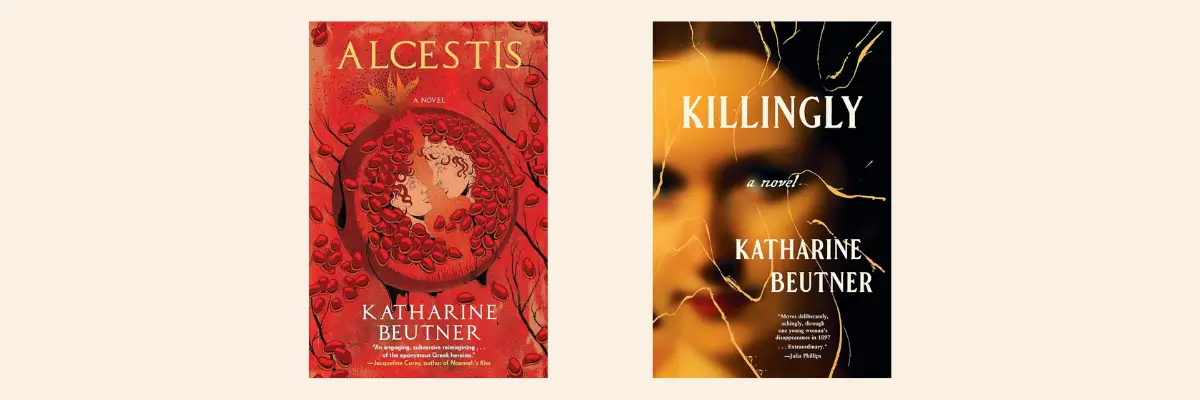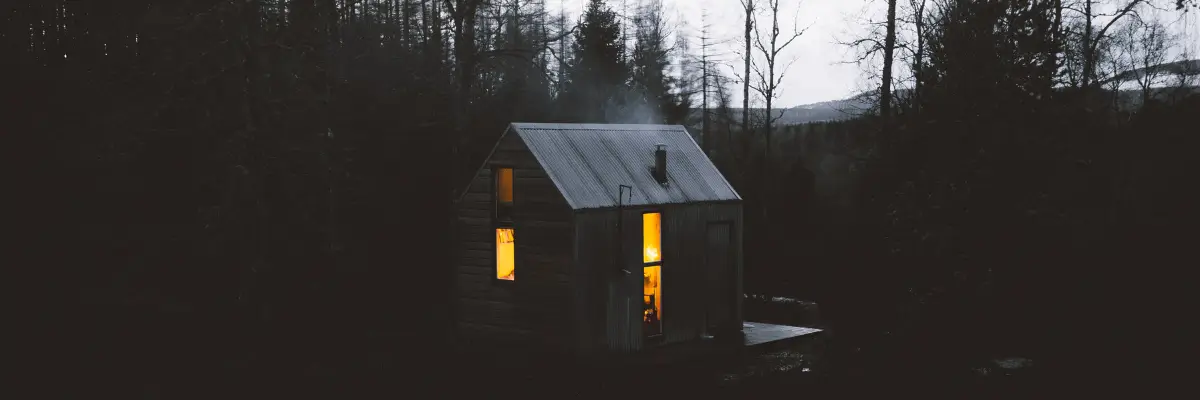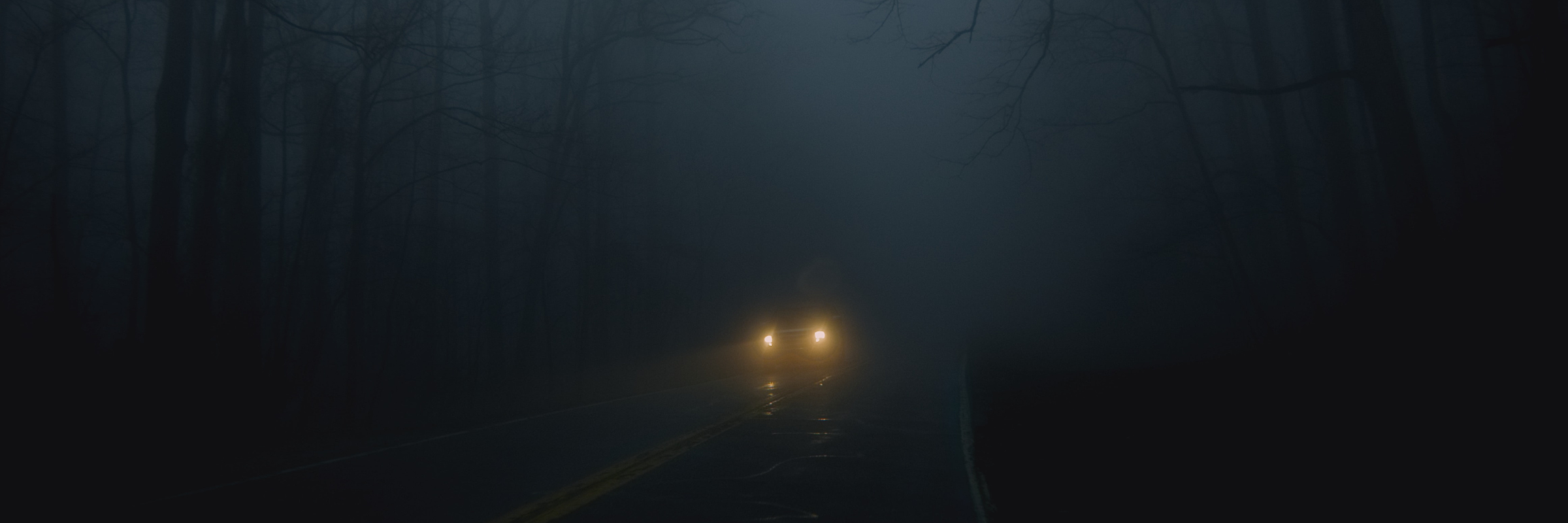Hearing the term ‘gothic’ might evoke a stream of visual motifs and mental images for you, but did you know that there are tens, if not hundreds, of subgenres within the umbrella term of the gothic?
Enter the regional gothic: a subgenre that, depending on its setting, utilizes varying tropes and features to maximize its haunting appeal.
In this article, author Katharine Beutner outlines the features of a New England gothic novel and how these differ from the various regional genres of gothic literature. Katharine’s second novel, Killingly, is a haunting gothic novel of intrigue, longing, and terror based on the real-life disappearance of a Mount Holyoke student in 1897 and is perfect for fans of Donna Tartt and Sarah Waters.
After a fascinating live writing class with The Novelry, Katharine identifies the nuances of the genre for aspiring gothic fiction writers everywhere.
So, over to our gothic expert, Katharine!
The New England gothic
I should start by admitting that ‘New England gothic’ isn’t a subgenre label you’ll necessarily find in overviews of the gothic—it’s a term I began using years ago to describe my queer historical crime novel Killingly, published in 2023, while I was writing it.
At the time, I was living in Hawai‘i and grasping for a shorthand to evoke the very different atmosphere I meant to create. At that point, ‘dark academia’ hadn’t yet become a TikTok-enabled aesthetic trend. While there’s some overlap between that concept and New England gothic, I think it’s useful for writers interested in the gothic as a narrative mode to pay attention to how regional setting can shape their work. (In contrast, the dark academia aesthetic sometimes appears intentionally not grounded in a particular location—it can offer a dreamily unspecific fantasy setting, like a ‘studying in an ancient library with tea’ lo-fi playlist.)
As I wrote Killingly, I found it helpful to apply the label of New England gothic to the project because it allowed me to amplify elements of setting in ways that increased tension. The better you understand the subgenre you’re working in, the more actively you can experiment with its features.

What is the gothic?
Literary historians generally identify eighteenth-century British writers like Horace Walpole (The Castle of Otranto) and Anne Radcliffe (Mysteries of Udolpho, The Romance of the Forest, and others) as the originators of the gothic novel.
These early novels defined the gothic’s features: a mysterious house, a vulnerable heroine, dark threats of violence, unexplained supernatural events (such as walking suits of armor), hyperbolic language, and a gloomy/creepy atmosphere.
—Katharine Beutner
Matthew Lewis’s The Monk—still a banger—is another famous example, with lots of anti-Catholic sentiment and lurid sexuality. In this original form, the genre remained popular for at least 50 years, saturating literary culture sufficiently that Jane Austen could mock its tropes in Northanger Abbey and influencing the development of the Romantic sublime, as well as early works of science fiction like Mary Shelley’s Frankenstein.

Gothic subgenres
The most famous subgenre within the gothic is Southern gothic, popular in film and other media as well as fiction. Its tropes are familiar: violence, decay, insanity, humid heat, class conflict, plantations draped in Spanish moss and haunted by the history of slavery, cemeteries, bayous, snake handling, et cetera.
Many readers may associate Southern gothic with melodrama; the term was originally deployed to insult William Faulkner and similarly baroque writers, and Eudora Welty apparently rejected it for her own work.
Going up one step in classification levels, we should pause for a moment on the broader notion of the American gothic. In the well-known painting of that title, the dour-looking couple is meant to represent the sort of people who might live in the Carpenter Gothic-style home behind them, with its churchlike window. American gothic fiction is also deeply influenced by Christianity, particularly Puritanism, and is often directly linked with horror and a disjunction between mind and body, reason and madness.
Many texts in the canon of American literature, especially in the nineteenth century, fit the American gothic mode: Washington Irving’s ‘The Legend of Sleepy Hollow,’ Nathaniel Hawthorne’s ‘Young Goodman Brown’ and elements of The Scarlet Letter, and, of course, most of the works of Edgar Allan Poe. Because New England was settled early in the process of the European colonization of America, many of these stories take place in the northeast, and they hint at a direction for the American gothic that’s quite different from the Southern gothic mode.
{{blog-banner-5="/blog-banners"}}
Getting your hauntings right in New England gothic
If you’re still wondering whether another geographically distinct subgenre name is necessary, though, I understand! A quick glance at Wikipedia reveals that the subdividing of the gothic into genres can get really sub-: Wikipedia has pages for ‘Southern Ontario gothic,’ ‘space gothic’ (!), and ‘suburban gothic.’ (I would like to read all of them, frankly.) Yet, there are a few reasons why this particular division feels necessary.
First, American fiction has a history of regionalism. In the nineteenth century, when the average reader might have been unlikely to travel the entire massive country, ‘local color’ novels and stories sought to portray the distinct landscapes and cultures developing within the young nation. (Irving’s ‘Legend of Sleepy Hollow’ contains some typical regionalist material, too.) Whether you’re writing historical fiction or a story set in the contemporary U.S., the features of the gothic—just like other cultural markers—will still differ among various American landscapes. What terrifies in the woods of Massachusetts may diverge from what terrifies in Mississippi.
Even more importantly, every region in the United States is marked by histories of the dispossession and slaughter of the land’s native inhabitants. The whole country is haunted, but the hauntings of each place are specific and unique, like the peoples who once lived (and continue to live) in those places. The gothic is a genre of hauntings, so you want to get the texture of your hauntings right.
What’s ‘New England’ about New England gothic?
In my opinion, Shirley Jackson’s writing defines this subgenre, and we can trace many of its features to her work. Jackson lived and wrote in Vermont, a densely wooded state whose largest metropolis (Burlington) claims just under 45,000 residents.
The woods
In contrast to the bayou or the plantation field, New England gothic atmosphere often relies upon the claustrophobia of its woods. The New England states are the opposite of western ‘big sky’ country. Trees pack in close; it’s easy to get lost on the narrow roads, which wind among hills or low, rounded, old mountains. On film, as in Robert Eggers’s The VVitch, the foreboding forest is practically a character. In just about any gothic fiction set in the northeast U.S., mysterious things will happen in the woods.

Old houses, not castles or plantations
Jackson’s beautifully creepy, clever novella may be titled We Have Always Lived in the Castle, but notably, Merricat’s home is not a castle. (Hill House is a mansion, though no one staying in it is an aristocrat.)
Generally, the gothic in New England occurs in old Colonials or creaking Cape Cods—the house in Daniel Mason’s stunning North Woods shows how one colonial-era home holds love and violence over several centuries. Kelly Link’s short stories, like ‘The Specialist’s Hat’ and ‘Skinder’s Veil,’ often feature uncanny, isolated houses.
Schools as settings
Donna Tartt’s The Secret History creates some gothic frissons with its wild bacchanals, and emily danforth’s Plain Bad Heroines revels in the creepiness of a now-derelict girls’ boarding school, complete with orangerie—note that both novels involve violence or injury occurring in the woods. Many of the oldest college campuses in the U.S. are located in New England, due to the area’s early colonization by British settlers, with buildings in Gothic architectural styles now associated with dark academia. In addition, schools are potent settings to examine social class, sexuality, and individuation.
Cultural structures as drivers of horror
In The VVitch, patriarchy is the monster; in Jackson’s ‘The Lottery,’ tradition ensures that violence will continue. The town’s ‘justice’ is only a tool for shaming in The Scarlet Letter. The gothic in New England often engages with painfully repressive systems rather than with violence that feels random in its effects.
As in many gothic forms, the monsters in New England gothic often turn out to be people rather than eldritch creatures.
—Katharine Beutner
There are exceptions, of course, from the Headless Horseman onward, especially in works that lean more into horror. For example, some of H.P. Lovecraft’s early work, such as ‘The Rats in the Walls,’ intentionally deploys gothic tropes, while his later work is famously full of inhuman monsters.
Lovecraft lived in Rhode Island and set his work in fictionalized versions of New England; he was also an inveterate racist and white supremacist. Notably, the book and TV show that tackled the way Lovecraft’s racism shaped the subterranean horrors he imagined—both titled Lovecraft Country—start with the Black protagonist traveling from Chicago to Massachusetts, to an isolated mansion in the woods.
Cold, not heat
New England gets a lot of snow, though due to climate change, there’s also a great deal of mud and flooding these days. Though summers can be hot at times, it’s not a region characterized by languid summer days or minds fracturing in the heat. (The black flies, on the other hand, might trigger a June outburst.)
One of the most frightening depictions of struggling against this cold appears in Melanie Finn’s tense novel The Hare.
Isolation and suppression, not smothering and conflagration
The rest of the U.S. stereotypes New Englanders as unfriendly and socially reticent. Robert Frost’s famous line ‘Good fences make good neighbors’ has more nuance in context than it’s often granted, but there’s a reason the old granite border walls between farms often symbolize the region in the country’s imagination, in contrast to the moss-draped trees of Southern gothic.
Emotional suppression and the unwillingness to speak often drive plot in the New England gothic.
—Katharine Beutner
This is true in Killingly, in which the protagonist’s refusal to explain what she knows about her best friend’s disappearance forces other characters to act with desperation, and much more violently so in Conner Habib’s disturbing Hawk Mountain.
In another Eggers film, The Lighthouse—partially inspired by an unfinished Poe story—Willem Dafoe’s character demands angrily of Robert Pattinson’s, referring to the younger man’s earlier confession: ‘Why’d you spill your beans?’ The offense, it seems, isn’t having committed violence; the offense is telling about it.

What to consider as a writer
If you’re writing gothic fiction, it’s useful to examine the features of the genre that are appearing in your draft, regardless of the location where your story is set.
- Does your work seem to fit into an existing subgenre of the gothic? If so, how would you like to adapt or manipulate features associated with that subgenre?
- How is the setting shaping your story? If the setting of the story isn’t yet playing a vivid role in building tension, how can you amplify the sense of atmosphere?
- What sorts of physical locations—houses or other buildings—appear in your gothic story? How are they important to the story?
- What social concerns or themes feel central to your project? How does the gothic as a genre make room for those themes to manifest in metaphorical or concrete ways?
- And finally: if your dark or unsettling doesn’t fit into an already-defined gothic subgenre, how would you describe it?
Welcome home, writers. Join us on the world’s best creative writing courses to create, write, and complete your book. Sign up and start today.
.webp)


.avif)
.webp)
.webp)
.webp)